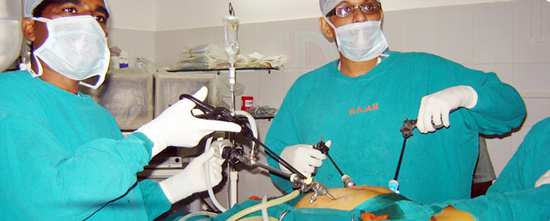
Everything You Must Know About Urinary Tract Endometriosis
Endometriosis could be defined as a medical condition where endometrial cells that are usually found in the uterine lining appear in the pelvic area, ovaries, and fallopian tubes.
Urinary tract endometriosis is quite rare. It occurs when the endometrial cells grow on the surface or within the urinary tract, specifically the bladder.
Every month during menstruation, endometrial cells accumulate. They are then shed from the body. But when they are on or inside the bladder, they cannot be shed. According to the best endometriosis surgeon in Kolkata, around five percent women who are diagnosed with endometriosis have it in the urinary system.
The following write-up specifies the symptoms of and treatments for urinary tract endometriosis. Please check them out now.

Symptoms of Urinary Tract Endometriosis
As per a report published in 2012, about 35% of women who suffer from urinary tract endometriosis do not experience symptoms. The doctor may discover the condition while testing them for infertility or any other kind of endometriosis.
Symptoms are often noticeable during your period. They include –
- Frequent or urgent need to empty your bladder
- Pain when the bladder is full
- Pain or a burning sensation when you urinate
- Blood in the urine
- Pelvic pain
- Low backache
If endometriosis occurs in other locations of the pelvis, you will experience –
- Pain during sexual intercourse
- Excruciating cramps during and before periods
- Heavy bleeding during periods
- Nausea
- Diarrhoea
- Fatigue
Treatments for Urinary Tract Endometriosis
The best gynaecologist in Kolkata said removing the endometrial cells through surgery is the best option. Doing so can provide relief from pain and enhance the overall quality of your life.
- In transurethral surgery, the doctor installs a scope inside your bladder and urethra. A tool at the end of this scope is utilised for removing the endometrial cells.
- In partial cystectomy, the doctor removes the portion of the bladder that contains the cells. This surgery is performed via a large incision or plenty of small incisions in the abdomen.
Hormone therapy can also slow down the growth of the endometrial cells. It can eliminate pain and let you conceive in the future.
Bottom Line
Not treating urinary tract endometriosis can damage the kidney. Although uncommon, cancer can also grow if the endometrial cells are left to grow inside the bladder.
Your recovery depends on how serious your condition is and how it is treated. Surgery can eliminate almost all the symptoms. However, certain studies indicate that in around thirty percent women, endometriosis unfortunately reappears post surgery.
Endometriosis is an extremely painful condition that can adversely impact your daily life. But with a proper treatment plan and substantial support from your family and friends, you can manage it.